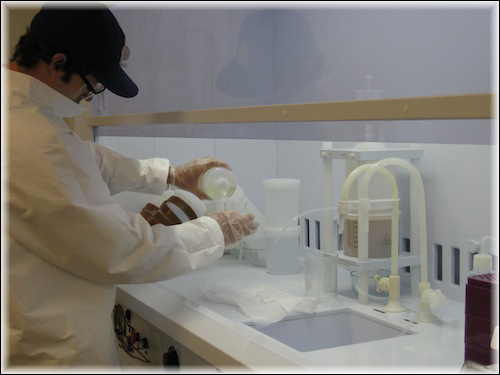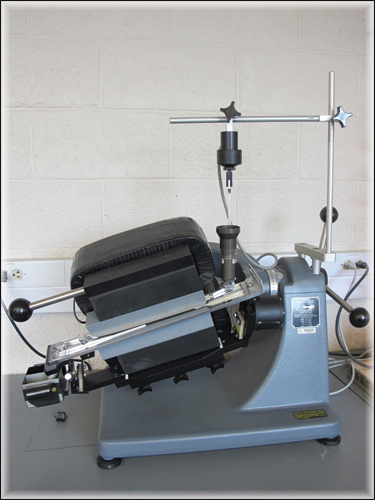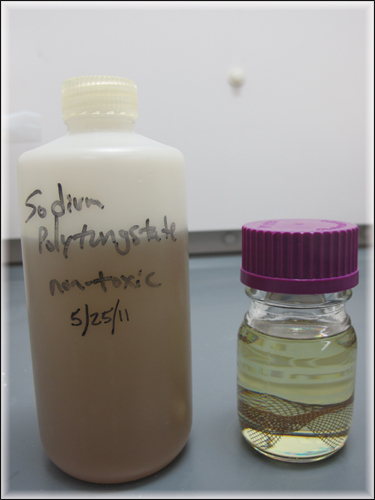Clean Lab

The Clean Lab at NMSU provides a clean environment for acheiving extremely low blanks during sample preparation and analyses. For more information see the webpage of Dr. Frank Ramos.
Geochemistry Lab

The Geochemistry Lab at NMSU is used for a variety of purposes:
- Powdered whole rocks are melted to make glass beads for X-ray fluorescense analyses.
- Mounted crystals are hand polished in preparation for secondary ionization mass spectrometry and electron microprobe analyses.
- Heavy liquids mineral separations (below).
Mineral Separation
In our mineral separation lab, we utilize several techniques to separate mineral fractions for analytical purposes.
PI: Dr. Jeff Amato
Gemini Table

Using the vibrating Gemini table crushed and sieved samples are further separated into heavy, medium, and light fractions. The heaviest fraction, containing minerals such as magnetite, zircon, and apatite, will float down the table into the center bucket. Subsequently lighter minerals and the finest sieve fractions will float and shake off into the side buckets and the large orange container, respectively.
Frantz Magnetic Separator
The heaviest fraction will then undergo separation by magnetic susceptibility using the Frantz magnetic separator. By adjusting the power of the magnet and slope of the separation, several magnetic and nonmagnetic fractions can be obtained.

Heavy Liquids Separation

The final step in mineral separation is by preferential flotation of mineral fractions by heavy liquid. Nonmagnetic fractions first undergo separation by sodium polytungstate (SPT; 2.85 g/cm3) and finally by methylene iodide (MEI; 3.3 g/cm3). At the end of separation, the final fraction should contain minerals such as zircon, apatite, monazite, barite, and pyrite.
